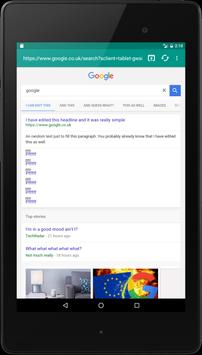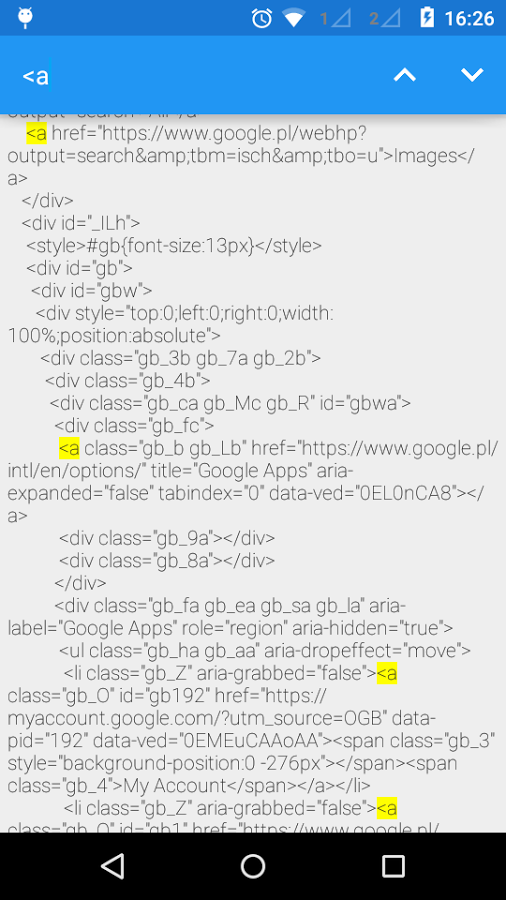

- #Site html inspector online update
- #Site html inspector online manual
- #Site html inspector online professional
The Resources panel is a supercharged version of the previous Network panel.
Position metrics - the Metrics pane now includes position info for absolute, relative and fixed positioned elements. Metrics editing - double click to edit a any of the CSS box model metrics. Deleting all the text will delete the property, if allowed. DOM property editing - double click to edit a DOM property in the Properties pane. Deleting all the text will delete the attribute. Typing or pasting in multiple attributes will add the new attributes. DOM attribute editing - double click to edit a DOM element attribute. Holding the Alt/Option key will step by 0.1, while holding the Shift key will step by 10. Stepping for numeric style values - while editing a style property value with a number, you can use the Up or Down keys to increment or decrement the number. Typing or pasting in multiple properties will add the new properties. Deleting all the text will delete the property. Style property editing - double click to edit a style property. Temporarily disable style properties - hovering over an editable style rule will show checkboxes that let you disable individual properties. Clicking on a node in the page will focus it in the Elements panel and turn off the inspect mode. Inspect clicked elements - enabling the new inspect mode lets you hover around the page to find a node to inspect. #Site html inspector online update
Automatic updates - the DOM tree will update when nodes are added to or removed from the inspected page. Descend into sub-documents - expanding a frame or object element will show you the DOM tree for the document inside that element. Under the hood we have made number of changes and unified everything into one DOM tree. The Elements panel is largely the same as the previous DOM view - at least visually. Our compatibility with Firebug’s command line and nsole APIs has also been greatly improved by Keishi Hattori (服部慶士), a student at The University of Tokyo (東京大学) who tackled this area as a summer project. The current suggestion will also be accepted when pressing the Tab key if there is only one matched property. Pressing the Right arrow key will accept the current suggestion. If there are multiple properties with the same prefix, pressing the Tab key will cycle through them. As you type expressions, property names will automatically be suggested. In addition to the visual changes to the Console, we have also greatly improved usability by adding auto-completion and tab-completion. Clicking on these will also open the Console. The Console can also be toggled by the Escape key.Įrror and warning counts are now shown in the bottom right corner of the status bar. The Console toggle button is found in the status bar, causing it to animate in and out from the bottom of the Web Inspector. Unlike the other panels, the Console is not just used for one task - it might be used while inspecting the DOM, debugging JavaScript or analyzing HTML parse errors. The Console is now accessible from any panel. The toolbar items (Elements, Resources, Scripts, Profiles and Databases) are named after the fundamental items you will work with inside the respective panels. Redesigned Interfaceįirst and foremost, the Web Inspector is now sporting a new design that organizes information into task-oriented groups - represented by icons in the toolbar. Remember, most of the Web Inspector is written in HTML, JavaScript, and CSS, so it’s easy to get started making changes and improvements. We really want to get the whole community involved with making this the best web development tool available. Some of the Web Inspector improvements were contributed by members of the WebKit community. If you diligently use the Web Inspector in nightly builds, you might have seen some of these improvements, while other subtle changes might have gone unnoticed. 
Today's computers can do 5 billion instructions per second.It has been nine months since our last Web Inspector update and we have a lot of cool things to talk about. The first electronic digital computer, ENIAC (1945), could do 5000 instructions The first electrical computer, Z3 (1941), could do 5 instructions per second.

#Site html inspector online manual
To learn more, check out the browser's own manual for developer tools:
#Site html inspector online professional
Using professional hardware, while other sites attract hobbyists using older computers.Īnyway, data collected from W3Schools' log-files over many years clearly shows the longīrowser's developer tools can be used to inspect, edit and debug HTML, CSS, and JavaScript of the curently-loaded page. Different sitesĪttract different audiences. W3Schools' statistics may not be relevant to your web site.

"The pure and simple truth is rarely pure and never simple."








 0 kommentar(er)
0 kommentar(er)
